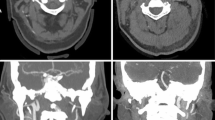Summary
In a retrospective study, 376 paragliding accidents have been analysed. Leg injuries were most common, but a large number of spinal injuries also occurred. The causes were either misjudgement by the pilot or the influence of weather and terrain. Improvements in the instructor's knowledge and the pilot's training could have prevented most of the accidents. Analysis of the mechanisms of the crashes and the pattern of trauma help to produce an efficient approach to diagnosis and treatment.
Résumé
Les auteurs ont étudié, de façon rétrospective, 376 accidents de parapente en analysant le mécanisme des lésions, les associations traumatiques et les possibilités de prévention. La plupart des accidents surviennent à l'atterrisage ou au décollage. Ils atteignent aussi bien les débutants que les pilotes experts. Les lésions prédominent à la jambe et, de façon préoccupante, au niveau de la colonne vertébrale. Grâce à la législation allemande sur le port du casque, les traumatismes crânio-céphaliques sont très rares. On doit distinguer deux groupes principaux d'accidents: les uns dus à la maladresse et aux erreurs de jugement du pilote, les autres conséquence du temps et du terrain. L'amélioration des connaissances des instructeurs et de l'entraînement des pilotes, ainsi que le bon sens, auraient pu prévenir la plupart des accidents. L'analyse des principaux mécanismes lésionnels et des associations traumatiques facilite le diagnostic et permet une meilleure approche thérapeutique.
Similar content being viewed by others
References
Aupetit H, Ledoux X (1987) Parapente: ça plane et ça plâtre! Tribune Médicale 222: 15–19
Billing A, Zeller T (1990) Gleitschirmfliegen — Das Ikarus-Syndrom. Unfallchirurgie 16: 286–290 (Nr. 6)
Geyer M, Beyer M (1989) Verletzungen beim Gleitschirmfliegen. Unfallchirurg 92: 346–351
Greenspan L, Mc Lellan B, Greig H (1985) Abbreviated injury scale and injury severity score: a scoring chart. J Trauma 25: 60–64
Hallel T, Naggan L (1975) Parachuting injuries: a retrospective study of 83718 jumps. J Trauma 15 (1)
Krissoff WB, Eiseman B (1975) Injuries associated with hang gliding. Special communications. JAMA 233: 158–160
Ledoux D (1987) Plaisir à risque ou vice coupable? Alpirando Parapente 98: 72–73
Margreiter R, Lugger LJ (1978) Hang-gliding accidents. Br Med J 1: 400–402
Penschuck C (1980) Verletzungsursachen beim Drachenfliegen. Chirurg 51: 336–340
Reymond MA (1988) Traumatologie bei Gleitschirmunfällen. Chirurg 59: 777–781
Tongue JR (1977) Hang gliding injuries in California. J Trauma 17: 898–902
Yuill GM (1977) Icarus's syndrome: new hazards in flight. Br Med J 1: 823–825
Author information
Authors and Affiliations
Rights and permissions
About this article
Cite this article
Zeller, T., Billing, A. & Lob, G. Injuries in paragliding. International Orthopaedics 16, 255–259 (1992). https://doi.org/10.1007/BF00182706
Issue Date:
DOI: https://doi.org/10.1007/BF00182706




